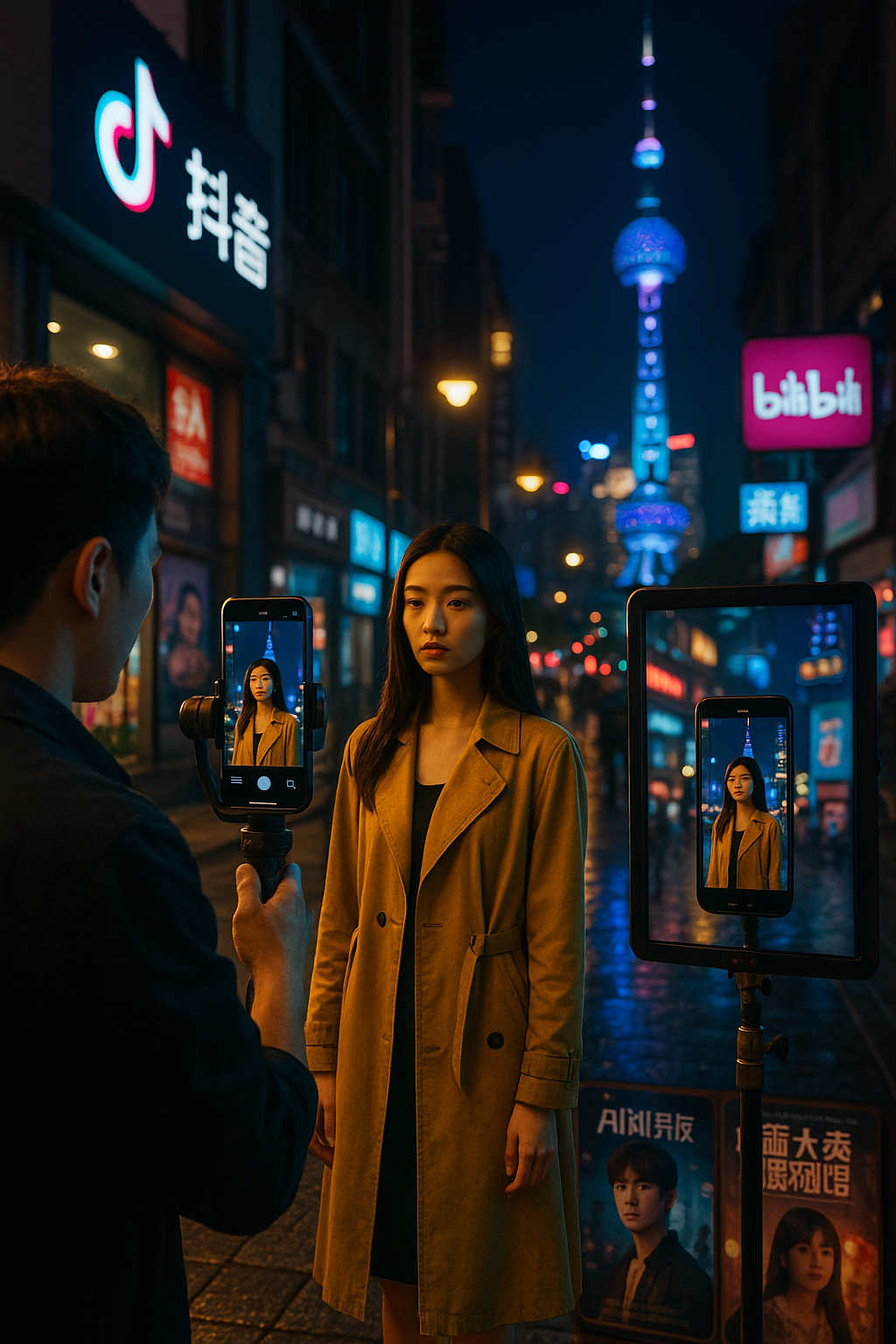
In an age where millions consume stories through phones held upright, China is leading a cinematic transformation that few in the West saw coming: the rise of vertical filmmaking. Once dismissed as an amateur’s mistake, the 9:16 aspect ratio — long associated with TikTok and Instagram Stories — is now at the heart of a creative movement that’s redefining how narratives are told, produced, and monetized.
From Social Scroll to Screen Success
What began as short-form content on apps like Douyin (China’s domestic version of TikTok) has matured into a sophisticated vertical filmmaking industry. Platforms such as Kuaishou, Bilibili, and iQIYI now feature vertically formatted series, micro-dramas, and even full-length films tailored for mobile-first audiences.
These are not simple vlog-style uploads. Vertically shot productions in China now include full production crews, celebrity actors, and elaborate visual effects — all optimized for an upright frame. Some vertical series boast tens of millions of views, drawing lucrative sponsorships and paid subscriptions. Titles like Escape from the British Museum and My AI Boyfriend demonstrate that vertical narratives can be serialized, cinematic, and emotionally resonant.
Why Vertical Works in China
The rise of vertical filmmaking in China is not a gimmick — it’s a response to real-world conditions:
- Mobile-first audiences: Over 1 billion smartphone users in China consume the majority of video content in portrait mode, often in transit or during breaks.
- Social storytelling: Apps encourage bingeable, short episodes with cliffhangers, promoting rapid audience growth and engagement.
- Low barriers to entry: Creators can shoot, edit, and distribute vertical content without massive budgets, opening the door for new voices and experimental formats.
As a result, vertical cinema is not just a trend — it’s a pipeline. A successful 2-minute short can evolve into a full-fledged drama series, and platforms now invest directly in vertical projects the way studios once funded indie films.
Platforms Are Betting Big
Major Chinese tech firms are building entire vertical content ecosystems. Tencent Video launched a dedicated vertical drama section. Bilibili and Kuaishou are experimenting with hybrid models that mix horizontal storytelling with vertical visual techniques.
Meanwhile, iQIYI announced earlier this year that it would fund over 100 vertical short dramas in 2025 alone, aimed at Gen Z viewers looking for fast-paced, emotionally intense stories optimized for the small screen.
Vertical storytelling even appeared at film festivals across Asia in 2024, with a new “Vertical Screen” category added to the Shanghai International Film Festival — signaling growing legitimacy.
A New Visual Language
Vertical filmmaking demands different creative strategies. Directors must rethink composition, movement, and intimacy. Instead of wide landscapes or ensemble shots, the vertical format favors close-ups, isolated characters, and a vertical sense of depth — such as elevators, stairwells, or urban alleyways.
Chinese filmmakers are pushing boundaries with vertical split screens, text overlays, and novel transitions. In many ways, vertical cinema is doing for the 2020s what MTV did for the 1980s: forcing a reimagination of pacing, framing, and emotional tone.
What It Means for Global Filmmaking
Western studios are starting to take notice. Netflix, Amazon, and TikTok have launched vertical pilots, and tools like CapCut and Adobe Premiere Rush are simplifying professional vertical workflows.
But while the West experiments, China is building. Vertical content now generates billions in ad revenue and has birthed new production companies focused solely on portrait-ratio storytelling.
What was once seen as casual is now strategic. What was once fringe is now the frontier.
Conclusion
China’s vertical filmmaking boom reflects more than a shift in screen orientation — it’s a cultural realignment. In a world where attention is fragmented and mobile-first is the default, Chinese creators are proving that vertical is not a constraint. It’s a canvas.
As global audiences continue to scroll, pause, and engage on their phones, one thing is clear: the future of cinema may not be wide — it may be tall.
Chris Sturges, Business Development Director for
Suspiciously Convenient Productions Inc
Contact: chris@suspiciouslyconvenient.com
Tags: #Vertical Cinema #Made For Mobile #China Film Trends
#Portrait Format Film #Scroll Stopper Stories #Future Of Filmmaking



